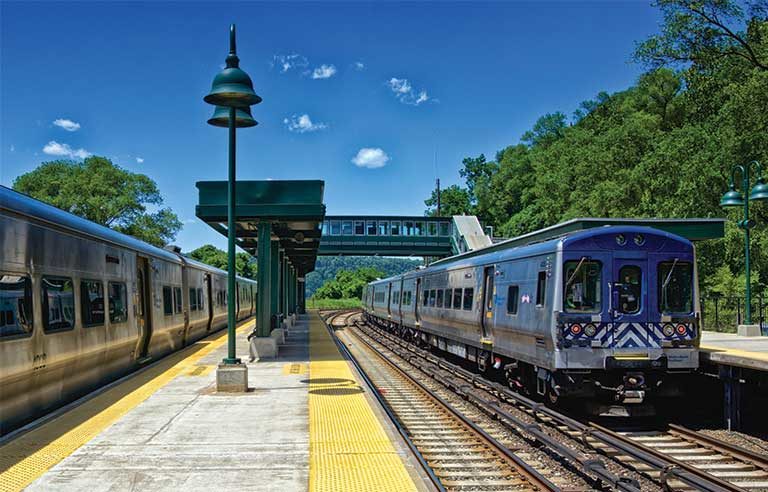‘Finish the job’: NTSB member leads push on Positive Train Control implementation

New Haven, CT — National Transportation Safety Board member Jennifer Homendy, Sen. Richard Blumenthal (D-CT) and railroad safety advocates repeated their call for full implementation of Positive Train Control – emergency slowing and stopping systems designed to help prevent train crashes and derailments caused by human error.
The group spoke during an Aug. 20 news conference on the 50th anniversary of a train collision in Darien, CT, that killed four people and injured 43 others. NTSB’s subsequent investigation prompted the agency’s first recommendation related to PTC.
“In the past half century, the NTSB has investigated more than 150 PTC-preventable accidents that have taken nearly 300 lives and injured about 6,700 others,” Homendy said in a corresponding press release. “The NTSB’s message is simple: No more extensions, no more excuses and no more delays. Finish the job.”
Congress mandated, via the Rail Safety Improvement Act of 2008, that PTC systems be installed on freight and passenger railroads by the end of 2015. Legislation signed into law in 2015 extended the deadline to the end of 2018. However, the law further allowed qualifying railroads that gained Federal Railroad Administration approval until Dec. 31, 2020, to implement PTC.
| Sign up for Safety+Health's free monthly email newsletters and get the news that's important to you. |
Although “the vast majority” of railroads have completed work to install PTC on tracks and locomotives, only 16% of Class I railroads, 19% of intercity passenger railroads and 29% of commuter railroads report their PTC systems are interoperable with other systems, according to the release. Because passenger trains typically operate on tracks owned by other railroads, interoperability is mandatory for PTC, NTSB states.
In an Aug. 20 post on his Twitter account, Blumenthal calls the inability to achieve full implementation of PTC “disgraceful.”
“PTC is a national mandate that with the proper will and wherewithal can be achieved,” Blumenthal wrote Aug. 20 in a separate tweet. “We must do more and do it more effectively so our railroads meet the 2020 deadline. This tech can and will save lives.”
Post a comment to this article
Safety+Health welcomes comments that promote respectful dialogue. Please stay on topic. Comments that contain personal attacks, profanity or abusive language – or those aggressively promoting products or services – will be removed. We reserve the right to determine which comments violate our comment policy. (Anonymous comments are welcome; merely skip the “name” field in the comment box. An email address is required but will not be included with your comment.)

